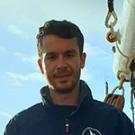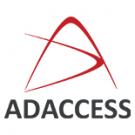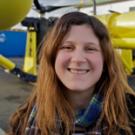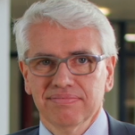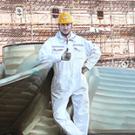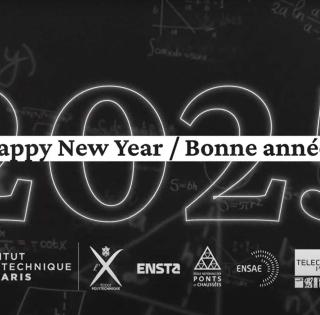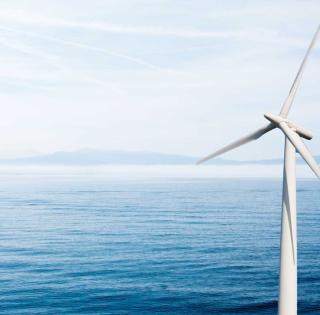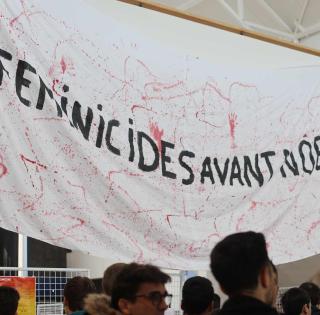

The Mélité, a new research and training vessel which is more spacious, modular and even better equipped, benefits from the backing of the French State and the Brittany region.
The Mélité replaces the Panopée, which was commissioned in 2007 and, in its time, has welcomed aboard over 400 hydrography-oceanography engineering students.
Like the Panopée, the Mélité is primarily dedicated to field training of hydrographers and oceanographers. It will also be used for research, marine robotics and underwater observatories located in the Iroise Sea.
Moored at the pontoon in the castle’s military port, the new craft is strikingly different compared to its predecessor. Its unusual shape and distinctive yellow color are altogether eye-catching.
- It is a flat-bottomed boat so that students can move around and work more easily while on board.
- Its low draft (1 meter with the engine propeller) makes it ideal for mapping shallow areas, nearer the shore or the rocky areas of the harbor edge.
The new craft is also more spacious, modular and even better equipped than the previous one. - 10 meters long and 3 meters wide, the Mélité is larger than the Panopée. It will be able to accommodate two groups doing practical work instead of one (up to 8 or 10 people on board)
- It is equipped with a motorized moon pool with embedded instrumentation for easier installation of various underwater sensors, in complete safety: multibeam echosounder, inertial measurement unit, radar, GPS antennae, etc. Enhancement of this observational equipment forms part of the ObsOcéan project under the contract for regional development between the French State and the Brittany region (CPER), funded by both parties.
- Its more powerful motor (300 hp) will make it possible to head out beyond Brest harbor for a range of experiments, for training and research purposes.
Delivered at the start of 2023, Mélité has already been taken out for test sailings for the educational team to equip it and get to grips with it. It is poised to welcome the first groups of students aboard in September 2023. The Brest community will be able to see it in the harbor during its weekly outings aimed at exploring, measuring and describing the seafloor relief, wrecks and buried structures.
A brand-new training vessel dedicated to world-class education
ENSTA Bretagne, a general and multi-disciplinary engineering school and research institute, teaches a unique range of maritime engineering courses. The school’s hydrographic craft is the training vessel for one of its long-standing flagship courses – hydrography & oceanography.
Hydrography & oceanography delves into the methods for measuring and describing the beds and water column layers of oceans, seas, lakes and rivers. Such data is vital to know, not only for conducting any activities in the sea, along the coast or on rivers, but also for environmental monitoring.
Brest is the birthplace of hydrography-oceanography, and ENSTA Bretagne teaches one of the world’s foremost and longest-standing courses in the subject, and the only one in France to be recognized at the highest level (“category A”). There are 18 international courses with this recognition, 7 of which are in Europe.
This course combines demanding theoretical teaching (marine physics, data processing software and methods) with extensive practical work conducted out at sea or on a lake. The aim is to gain a full understanding and expertise of every stage of the specialism, so as to be able to put them into practice – from precise data acquisition out at sea to the production of a digital terrain model, whether a marine map of the seabed or currents or imaging of a wreck or other submerged structures.

The Mélité, a modular hydrographic vessel equipped with state-of-the-art sensors, therefore represents one of the key teaching aids for this course at the highest level.
In April 2022, ENSTA Bretagne’s FIG-IHO-ICA "category A" recognition was renewed directly following the first review by the IBSC experts, as the teaching staff had demonstrated their ability to adapt to the new requirements of the standard in keeping with technological and methodological advancements in the field. This recognition process (280 competencies assessed) is renewed every six years. It guarantees that graduates are capable of conducting and analyzing hydrographic surveys and oceanographic research to the highest standard and can enhance international databases with these results.

The employability rate among “cat. A” hydrography/oceanography engineers is extremely high.
Nearly 500 hydrographers have been trained in fifty years, since the school was founded back in 1971. This community has grown significantly over the past two decades, from a handful of graduates every year pre-2000 to 25/30 graduates a year today.
Such growth means that demand can be met even more effectively among all sorts of employers, including businesses, State hydrographic services and research centers.
Indeed, seabed description underpins the whole of the maritime economy. It is a fundamental profession for all human activities at sea: maritime traffic, search for offshore energy, protection of the marine environment and coastal areas, maritime works, maintenance of submerged infrastructure, locating an item at sea, etc.



























































